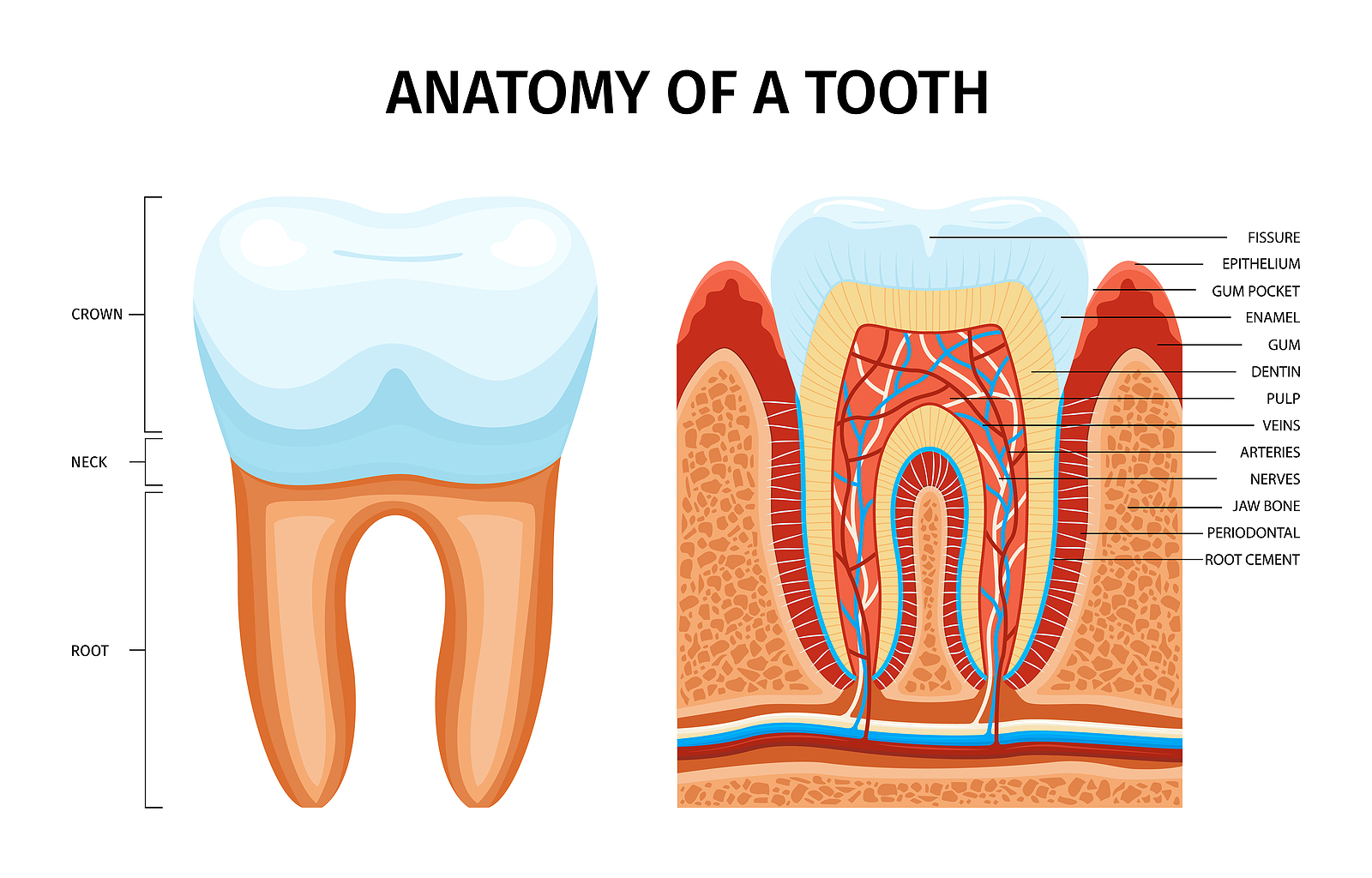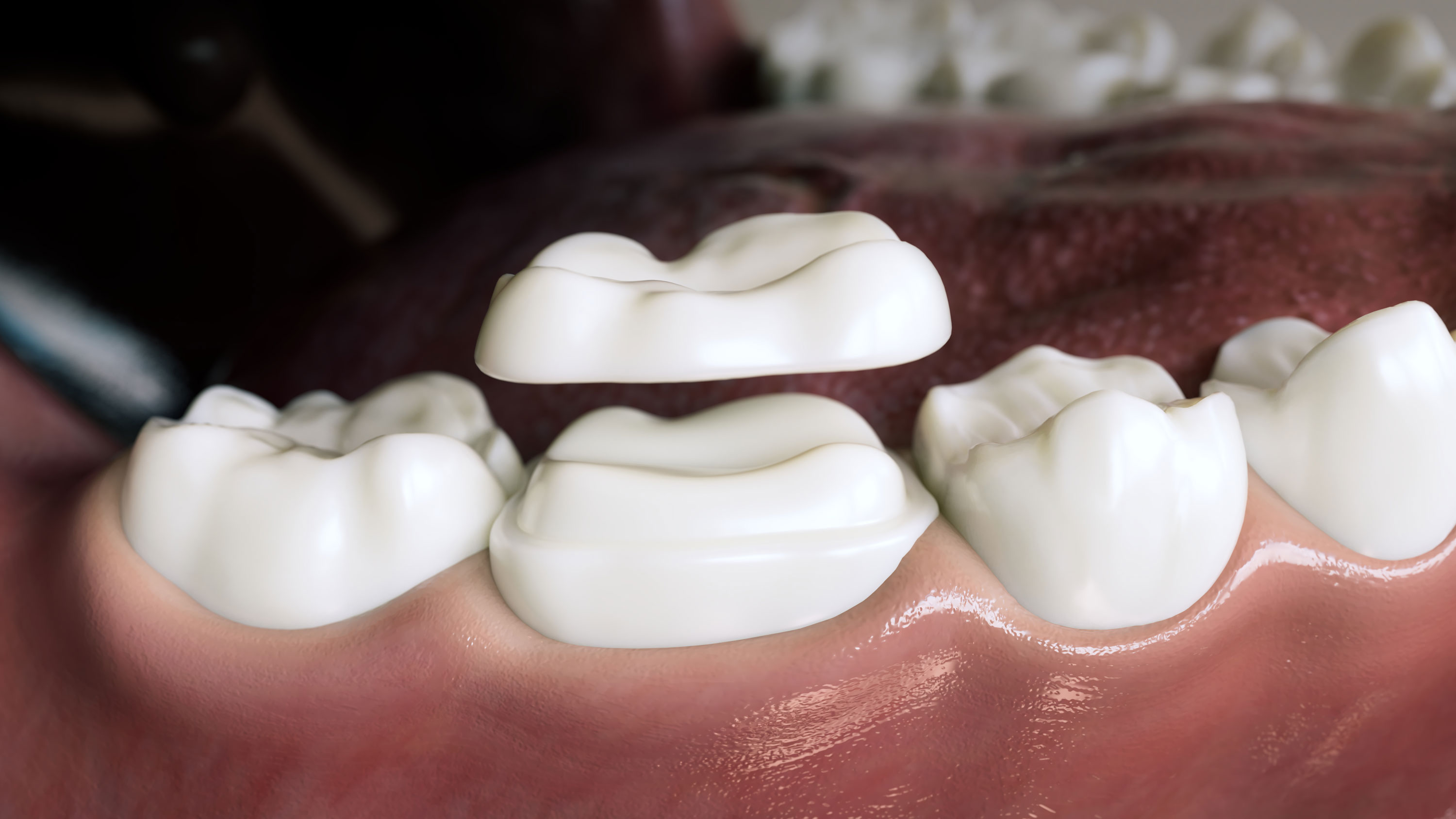Do you have a weird pain when biting? Did you bite something too hard, and now your tooth hurts? Or maybe you have a bit of discomfort in your jaw or tooth after you eat something. These could be common signs of a more serious issue regarding your teeth.
Before we discuss this issue, we need to understand the anatomy of your tooth. Starting from the center, your tooth has nerves and blood vessels in the middle of it. Immediately surrounding it and making up most of the core of your tooth is something called dentin. This dentin is a semi-hard material that helps absorb shock and provides a great deal of thermal resistance(hot and cold sensations). The last and most outer layer of the tooth is called the enamel. This is the hardest material in your body and acts to protect the tooth.

Our teeth are so strong. They’re designed to function for our entire lifetime. But for so many people, this does not hold true. Because our diets have changed so much over our existence, modern diets are filled with so many things, like sugar, that cause our teeth to get tooth decay. When we get decay, we get what we call fillings to help us preserve our teeth. For the most part, this does the trick. But sometimes, our decay compromises the tooth too much, and things start to break. The best way to explain this is to compare it to the roof of a house. A roof protects the house from the elements, but over time you may develop leaks, and the roof may need to be patched. After so many patches, the roof might become too compromised. Your roofer might advise you to get a new roof. But how does this compare to a tooth? Remember the layers? Your enamel is your roof! But can you replace your enamel? Not exactly, but in a way. That is what a dental crown is, a new strong covering over your tooth, like enamel. Interestingly, in the past, we used to cover the tooth with metal, gold at one point was everyone’s favorite. As the market demanded more aesthetically pleasing tooth-colored crowns, we started to fuse porcelain on top of the metal. Modern dentistry now has porcelain-like ceramics that can be as strong as some metals and has helped us avoid metal altogether.

So What Is A Cracked Tooth?
Sometimes the tooth looks completely intact. Sometimes you might even go to a dentist, and they might tell you that they don’t see anything. Cracked teeth can present as small hairline fractures in the enamel, sometimes concealed in the grooves of the tooth or even underneath an existing filling. This is what makes this diagnosis so challenging.
Now let’s talk about crack tooth syndrome. This can be one of the most frustrating diagnoses that a dentist can give a patient. It starts with an evaluation. This evaluation usually involves putting a tooth through a series of tests that simulate conditions that may aggravate the condition. These tests involve temperature(cold and hot), percussion, palpation, and pressure(bite). Any results that are abnormal and cannot be linked to any other dental conditions(i.e., Tooth decay) usually gives us this diagnosis. It’s almost an umbrella diagnosis. And it usually involves a multistage approach.
The first step is to perform a crown preparation that sometimes is accompanied by a core build-up. A crown basically replaces the enamel, and a core build-up basically replaces the dentin. Before a new crown is cemented in permanently, a temporary and removable crown is made. The patient should be asked to wear this temporary crown for at least 2 weeks. This is a great evaluation period. If all goes well that the issue is over, and the final crown is cemented in permanently. If the tooth still has issues, then something called a root canal should be performed.

Why a root canal? Sometimes the crack goes through the enamel, and dentin gets close to the nerve. A root canal removes the nerves and fills them up. This allows the dentist to now further bond the inner core of the tooth. The worst-case scenario is after all of the treatment, the tooth still hurts and will need to be removed and replaced with either a bridge or an implant.
Just like a crack in your windshield, it depends on how unlucky you are. The sooner the crack is detected and repaired, the better the chances. Just like a crack in your windshield, if you ignore it, then over time, it will grow and spread. Eventually, the problem gets worse, and the only option is removal and replacement. And just like most mechanics will tell you, there’s nothing like the seal on that original windshield. Your dentist would tell you the same about your tooth.

How To Prevent Cracked Teeth?
If you made it to the end of this blog, then I hope you got the message. This message is prevention. Regular checkups help catch small issues before they get worse. The larger the cavity, the weaker the tooth becomes. Also, try to avoid very hard foods like nuts and pork rinds. In some cultures, the eating of stewed bones can cause many cracks in the tooth. There are also conditions like bruxism(clenching and grinding) that can cause your teeth to crack. Grinders tend to wear off the biting surface of their tooth, which weakens the tooth and makes it more susceptible to fractures. A night guard, also known as an occlusal guard, is a custom-made appliance that you can wear at night to protect your teeth from the grinding forces.
To learn more, call Greater Dental Health at (470) 508-0044 or visit our dental office located at 5210 Town Center Blvd Ste 310 Peachtree Corners, GA 30092.